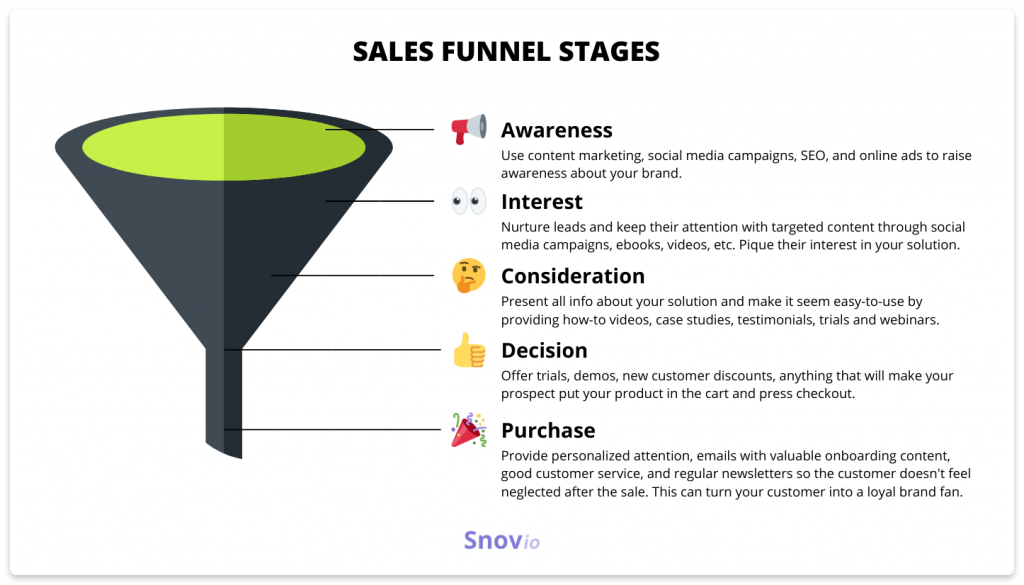Marketing qualified Lead (MQL)
Getting the right leads that have higher chances of converting into sales is a necessity. Before becoming a client, your prospect goes through several qualification stages in the sales cycle. Some companies qualify leads in multiple stages, for example, marketing qualified leads and sales qualified leads.
What is a marketing qualified lead?
A marketing qualified lead (also known as MQL) is a lead who is more likely to convert into sales and become a customer as compared to other leads but isn’t in the buying stage yet. This qualification is tracked based on the level of engagement with the business’s content and specific behaviors, e.g., what websites a person has visited and what they’ve downloaded.
Common behaviors that determine MQLs include but are not limited to:
- Downloading case studies, white papers, or other web content
- Signing up for email marketing campaigns (newsletters and product catalogs are perhaps the most common)
- Signing up for webinars or e-learning courses
- Requesting a product demo
- Putting items in shopping carts, even if a purchase didn’t occur
- Clicking on advertisements that typically take the visitor to a landing page or contact form
Lead scoring
Of course, every business has its model for assigning value to score their leads. Still, one of the most common ways to do it is by creating the lead scoring system based on the data from past leads. In the lead scoring model, you mainly assign numerical points to each lead you generate for your company. Higher scores indicate a lead who is more likely to buy.
You can score your leads based on numerous attributes, including their engagement with your website and the professional information they’ve submitted to you. With the help of lead scoring points, it’s possible to model the buyer’s process, prioritize leads, respond to them appropriately, and improve the rate at which these leads convert into customers.

Many businesses score leads based on such basic components as:
Demographic information
If you aim for a certain demographic, score leads who fit into that demographic highly. Other leads outside your demographic should score low or even have a negative score. A good way to filter leads is by having them fill out questions in the web form on your landing pages.
Company information
If you’re a B2B company, you might be more interested in selling to companies of a certain size, type, or industry. You can ask company-related questions on your landing page forms, too. This way, you can give points to leads who fit within your target audience and take points away from leads who aren’t what you’re looking for.
Online behavior
How leads use your website can show how interested they are in buying from you. Analyze the behavior of your leads who eventually became customers: What did they download? How many offers did they download? Which pages and how many pages did they visit on your site before becoming customers?
Email engagement
If someone has opted in to receive emails from your company, you can’t be exactly sure how interested that person is in buying from you, but there is a solution for that. This is when checking open and click-through rates can help you out and give you a much better idea of the leads’ interest level.
Social media engagement
How engaged a person is with your social media presence is another way to find leads. Do they interact with you on Twitter, or do they follow you on Facebook? Do they have many followers themselves?
Spam detection
Last but not least, it can be useful if you give negative scores to leads who filled out landing page forms in ways that could indicate they’re spam. For example, if the first name, last name, and company name are not capitalized, take points away from such leads. Besides, you might also need to consider which types of email address your leads are using compared with email addresses of your customer base. For example, if you’re a B2B company, you might take points away from leads who use Gmail or Yahoo instead of corporate email addresses.

Marketing qualified lead vs. sales qualified lead
Other profiling details like pain points or budget can also be relevant when qualifying a lead as a marketing qualified lead or a sales qualified lead (SQL).
SQLs often show immediate interest in the company’s products or services, and it’s best practice for sales teams to act on such leads within the first 24 hours of discovery. By contrast, MQLs may require more information and follow-ups to be converted.
Since MQLs take more time to be converted, marketers often use automation software to create email nurture programs. In plain words, the software automates the sending of emails to MQLs via a predetermined schedule. The leads are then scored based on email opens, link clicks, website visits, and other factors.
Marketing and sales teams tend to have different approaches, but it is of utmost importance that they cooperate to determine the place of each lead in the buyer’s journey. The rejection rates between MQLs and SQLs can be as high as 90% because they were wrongly identified as MQLs too early in the buyer’s journey.
In the sales funnel, an MQL would be at the wider, middle part. An SQL would be closer to the narrowest. Ideally, an MQL nurtured via one-to-many promotional emails and many-to-many social media marketing efforts will eventually gain enough lead points to become an SQL.

Wrapping it up
Conversion rate, ROI, and other metrics that matter in marketing and sales start with lead generation and qualification. With a strong understanding of MQLs and SQLs, you have the means to filter out the prospects that don’t have enough value, focus your attention on the leads that truly matter, and adapt your marketing messages to convert more of them into customers.















